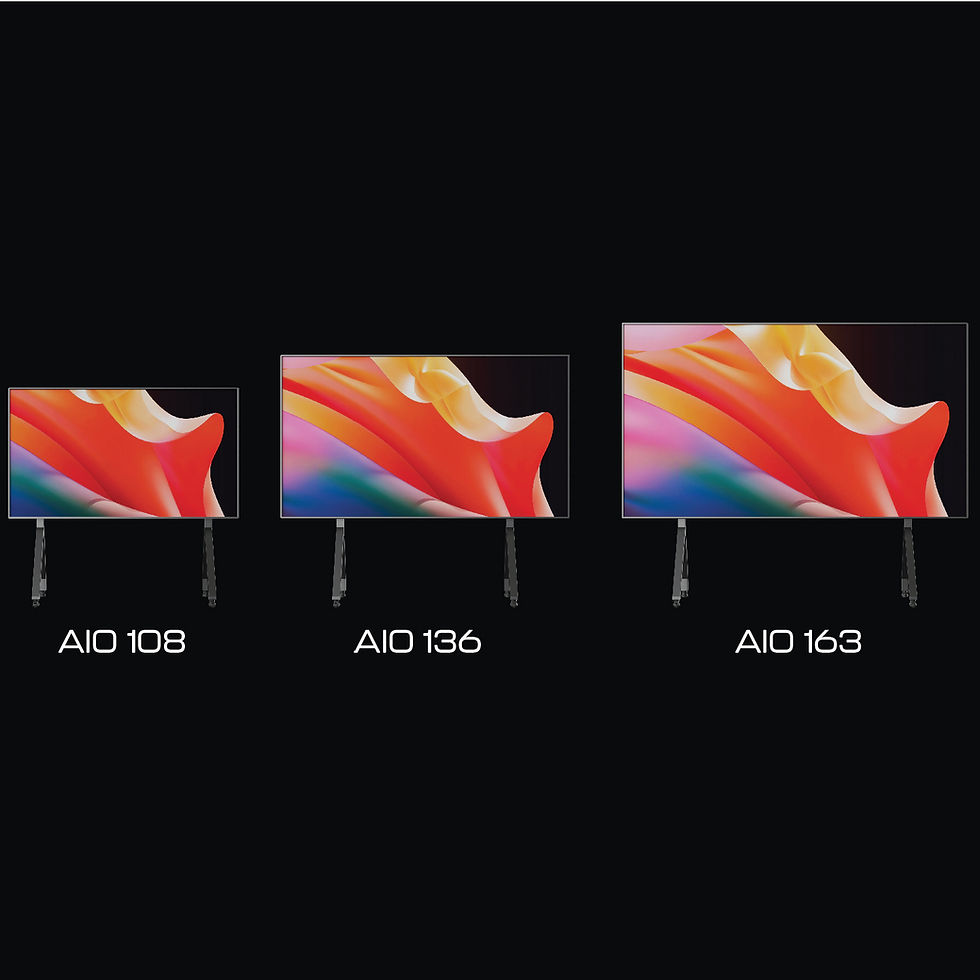The Importance of LED Viewing Distance
- The K-WAV Lumenary

- Dec 18, 2023
- 2 min read
Viewing distance is a crucial factor that can impact the perceived image quality on a dvLED (direct-view LED) display. The relationship between viewing distance and image quality is influenced by various factors, and optimizing this relationship is essential for delivering an immersive and visually pleasing experience. Here's how viewing distance can impact dvLED image quality:
Pixel Density and Resolution:
Explanation: The pixel density of a dvLED display, combined with its resolution, determines how fine or coarse the details appear. When viewed from a closer distance, a higher pixel density becomes more apparent.
Impact: Closer viewing distances may reveal more details and provide a clearer image, especially on larger screens. However, excessively close viewing distances may result in individual pixels becoming noticeable.
Perceived Image Sharpness:
Explanation: Viewing a display from an optimal distance allows the viewer to perceive the image as sharp and well-defined. Incorrect viewing distances may lead to a loss of perceived sharpness or detail.
Impact: Optimal viewing distances ensure that the visual content appears sharp, vibrant, and true to detail. Deviating too far from the recommended distance may compromise the clarity of the displayed content.
Field of View:
Explanation: The viewing distance affects the viewer's field of view—the extent of the display visible at a given distance. Too close or too far may result in an incomplete or distorted field of view.
Impact: An appropriate viewing distance ensures that viewers can comfortably take in the entire display, enhancing the overall viewing experience and preventing distortion.
Immersive Experience:
Explanation: For large dvLED displays, an immersive experience is often desired. The optimal viewing distance is determined by the size of the display, allowing viewers to engage with the content without feeling overwhelmed or detached.
Impact: Striking a balance between an immersive experience and a comfortable viewing distance ensures that viewers can fully appreciate the scale and impact of the content.
Screen Size and Aspect Ratio:
Explanation: The relationship between screen size, aspect ratio, and viewing distance affects the perceived proportions and balance of the displayed content.
Impact: Viewing from the correct distance helps maintain the intended proportions, preventing distortion and ensuring that the content is presented as intended by the content creators.
Visual Comfort:
Explanation: Viewing a dvLED display from an excessively close distance may cause discomfort, eye strain, or the perception of individual pixels. Conversely, viewing from too far away may diminish the impact of the visual content.
Impact: The ideal viewing distance strikes a balance between visual impact and comfort, allowing viewers to enjoy the content without experiencing discomfort or visual fatigue.
Application-Specific Considerations:
Explanation: Different applications may have specific recommendations for viewing distances. For example, home theater setups, digital signage, or control room displays may have unique requirements based on their intended use.
Impact: Adhering to application-specific recommendations ensures that the display is optimized for its intended purpose, whether it's for entertainment, information dissemination, or critical monitoring.
In summary, the impact of viewing distance on dvLED image quality is multifaceted. Striking the right balance ensures that viewers can enjoy an immersive, visually pleasing experience without compromising comfort or visual clarity. Manufacturers and designers often provide recommendations for optimal viewing distances based on the characteristics of the dvLED display and its intended application.



Comments